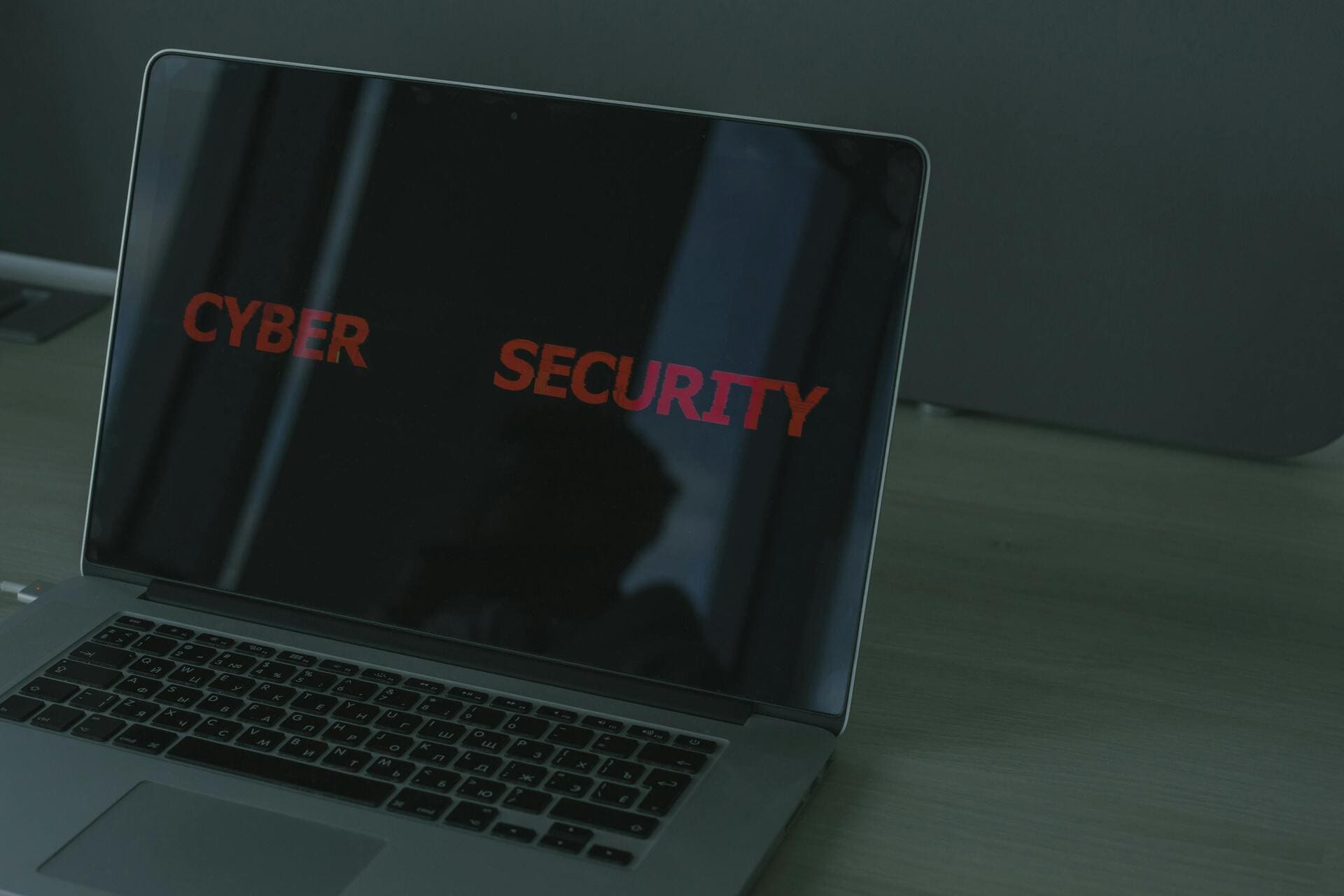Cyber and Network Security threats are evolving faster than ever, putting businesses of all sizes at risk.
The top network security threats targeting organizations today include:
- Ransomware Attacks
- Social Engineering and Phishing
- Insider Threats
- Third-Party and Supply Chain Attacks
- Configuration Mistakes and Human Error
- AI-Powered Cyberattacks
- Deepfake Technology Risks
- Internet of Things (IoT) Vulnerabilities
- Cloud Security Misconfigurations
For small and medium-sized businesses, these network security threats can be devastating. A single successful cyber attack can shut down operations for weeks, expose sensitive customer data, and cost thousands of dollars in recovery expenses. Many businesses never fully recover from a major security breach, with some forced to close permanently.
The reality is that cybercriminals don’t discriminate by business size. Whether you run a local retail shop or a growing professional services firm, you’re a target. Without proper protection, your business remains vulnerable to attacks and cybersecurity vulnerabilities that can destroy your reputation and financial stability.
According to Verizon, 60% of small businesses that suffer a cyber attack go out of business within six months, underscoring how critical it is to have strong defenses and a clear response plan in place.
Our cybersecurity solutions provide comprehensive protection tailored to your business needs, helping you stay secure while focusing on growth.
Top 5 Cyber and Network Security Threats Targeting Businesses Today
Understanding the most dangerous cybersecurity threats is the first step in protecting your business. These nine network security threats represent the biggest risks facing organizations today, based on our 25+ years of experience protecting businesses nationwide.
1. Ransomware Attacks
Hypothetical scenario: You arrive at the office on a Monday morning to find every computer screen displaying a ransom demand. Files are encrypted, systems are locked, and operations come to a complete halt. This nightmare unfolds thousands of times each year at businesses across the country.
Ransomware attack incidents have increased dramatically, with these malicious software programs encrypting files and demanding payment for decryption keys. Even if you pay, there’s no guarantee you’ll get your data back.
Ransomware Recovery Checklist:
- Disconnect infected systems immediately
- Contact law enforcement and cybersecurity professionals
- Assess backup systems and data integrity
- Document all evidence for insurance claims
- Implement enhanced security measures post-recovery
The best defense against ransomware attacks is prevention through regular backups, employee training, and robust security measures. Never rely on paying ransom demands as your recovery strategy.
Our 24/7 monitoring services can help prevent ransomware incidents by detecting suspicious activity before encryption begins.

2. Social Engineering and Phishing
One of the most common attack vectors involves tricking employees into revealing sensitive information or granting system access. Social engineering attacks exploit human psychology rather than technical vulnerabilities, making them particularly dangerous.
According to Verizon’s 2024 Data Breach Investigations report, 68% of all data breaches involve some form of non-intentional human interaction. Phishing attack methods have become increasingly sophisticated, with cybercriminals using artificial intelligence to craft convincing messages.
| Phishing Red Flags | Legitimate Communications |
|---|---|
| Urgent action required immediately | Reasonable timeframes for response |
| Generic greetings (“Dear Customer”) | Personalized, specific greetings |
| Suspicious links or attachments | Direct, verifiable contact methods |
| Poor grammar and spelling | Professional, well-written content |
| Requests for sensitive information | Never request passwords via email |
Training employees to recognize social engineering attempts significantly reduces your risk. Our comprehensive cyber security training for employees programs help staff identify and report suspicious communications before they can cause damage.
3. Insider Threats
Not all cyber and network security threats come from external sources. Insider attacks can be among the most damaging because they bypass traditional security measures by using legitimate access credentials.
These threats arise from current or former employees, contractors, or business partners who have authorized access to your systems. Insider threats often involve either malicious intent or accidental security breaches through negligence.
Protecting against insider threats requires careful access management, regular cyber security risk assessment, and employee monitoring systems. Implementing the principle of least privilege ensures employees only have access to information necessary for their specific roles.
Our managed IT services include continuous monitoring to detect unusual access patterns that might indicate insider threats.
As small businesses grow, it’s critical to ensure security measures, like access controls and monitoring, scale with them to stay ahead of insider threats.
4. Third-Party and Supply Chain Attacks
Cybercriminals increasingly target smaller, less secure vendors to gain access to their larger business partners. Supply chain attacks exploit the trust relationships between organizations and their suppliers, contractors, or service providers.
Verizon’s 2024 Data Breach Investigations Report found that 15% of data breaches in the U.S. involved a third party, such as a vendor, service provider, or software partner. Incidents like the MOVEit file transfer software breach, highlighted by the UK’s National Cyber Security Centre (NCSC), show how a single vulnerability in widely used tools can expose thousands of organizations, through no direct fault of their own.
The U.S. Small Business Administration provides guidance on cybersecurity for small businesses, emphasizing the importance of vendor security assessments. The interconnected nature of modern business creates vulnerabilities that extend beyond your direct control.
Mitigating supply chain risks requires careful vendor assessment, contractual security requirements, and ongoing monitoring of third-party relationships.
Our team helps clients evaluate vendor security practices and implement appropriate safeguards.
5. Configuration Mistakes and Human Error
Hypothetical scenario: A local retail business sets up a new firewall but accidentally leaves it misconfigured. For months, customer payment data is exposed without anyone realizing it, until it’s too late and the damage is done. Even the most advanced security systems can fail because of simple human error.
Security configurations require ongoing attention and expertise. Default passwords, improper network segmentation, and outdated software patches create vulnerabilities that cybercriminals actively scan for and exploit.
Critical configuration areas to monitor:
- Firewall rules and access controls
- Software updates and security patches
- User access permissions and privileges
- Network security settings and protocols
- Cloud service configurations and permissions
According to a 2024 IBM Security study, 95% of data breaches involve some form of human error, from employee mistakes to misconfigurations and mishandling of sensitive data.
Regular security audits help identify configuration issues before they become security breaches. As a former ConnectWise “All‑In Partner of the Year”, CMIT Solutions leverages best-in-class tools for ongoing configuration management, keeping your systems properly updated and hardened against evolving network security threats through our comprehensive managed services approach.
Contact us to learn how we can help protect your business from today’s top cyber and network security threats.
4 Emerging Cyber and Network Security Threats Reshaping Business Security
The cybersecurity landscape continues evolving as new technologies create fresh attack vectors. These emerging network security threats require updated security approaches and awareness, which is why our expert team continuously monitors the threat environment.

1. AI-Powered Cyberattacks
Artificial intelligence is revolutionizing both cybersecurity defense and attack methods. Cybercriminals now use AI to automate vulnerability discovery, craft personalized phishing messages, and adapt their tactics in real-time.
The National Institute of Standards and Technology (NIST) AI Risk Management Framework guides organizations implementing AI systems securely. According to a 2023 survey from CFO.com, 85% of cybersecurity professionals believe that the rise in cyberattacks is due to AI tactics.
AI Threat Warning Signs:
- Highly personalized phishing attempts
- Automated vulnerability scanning
- Adaptive malware that changes behavior
- Sophisticated social engineering campaigns
- Rapid-fire attack attempts across multiple vectors
Defending against AI-powered threats requires implementing AI-driven security solutions that can match the speed and sophistication of modern attacks. Our advanced security infrastructure includes next-generation tools designed to detect and respond to these evolving network security threats.
2. Deepfake Technology Risks
Deepfake technology poses unique risks to businesses through sophisticated impersonation attacks. Recent industry research, including data from DeepMedia, estimates that around 500,000 video and voice deepfakes were shared on social media in 2023, with that number projected to reach 8 million by 2025
These attacks typically involve fraudulent wire transfer requests, unauthorized access attempts, or social engineering campaigns designed to extract confidential information. Small businesses are particularly vulnerable because they often lack verification procedures for unusual requests.
Protection against deepfake attacks requires establishing verification protocols for sensitive communications, especially financial transactions. Multi-factor authentication and callback procedures help confirm the identity of individuals making unusual requests.
Our security policies include specific procedures for verifying high-risk communications.
3. Internet of Things (IoT) Vulnerabilities
Connected devices create new entry points for cybercriminals to access business networks. IoT vulnerabilities exist in everything from security cameras and smart thermostats to printers and conference room equipment.
| Common IoT Devices | Potential Security Risks |
|---|---|
| Security cameras | Unauthorized surveillance access |
| Smart printers | Document interception and network access |
| HVAC systems | Network entry point for lateral movement |
| Conference room displays | Meeting content exposure |
| Access control systems | Physical security bypass |
One 2023 report revealed a dramatic 400% surge in IoT and OT malware attacks between 2022 and 2023, showing how even operational technology, and not just traditional IT, is increasingly exploited. These devices often ship with default passwords and receive infrequent security updates, making them attractive targets for attackers.
Securing IoT devices requires changing default credentials, implementing network segmentation, and regularly updating device firmware. Our network threat detection services include comprehensive IoT device monitoring and management.
4. Cloud Security Misconfigurations
Cloud adoption offers tremendous benefits but introduces new security challenges. Misconfigurations in cloud services can expose sensitive data to unauthorized access or manipulation.
Check Point reports that cloud vulnerabilities have increased 154% in the last year alone. These vulnerabilities often result from complex cloud security settings that require specialized expertise to configure correctly.
Common cloud security mistakes:
- Overly permissive access controls
- Unencrypted data storage
- Inadequate backup and recovery procedures
- Insufficient logging and monitoring
- Improper network security configurations
Professional cloud security management helps ensure your cloud infrastructure maintains an appropriate security posture while supporting business operations effectively. Our team includes certified cloud security specialists who help clients with these complex environments safely.
Network Security Threats and Solutions for Modern Businesses
Modern businesses face unique network security challenges that require comprehensive solutions. Remote work, legacy systems, and mobile devices create complex security environments that demand expert attention.
Remote Work Security Gaps
Hypothetical scenario: An employee working from a coffee shop connects to public Wi-Fi to access company files. Without proper security measures, that single connection could expose your entire network to attackers through unsecured access points and personal devices.
Remote work environments often lack the security controls present in traditional office settings. Virtual private network connections, endpoint security, and secure access protocols become critical for protecting distributed workforces.
Our approach to securing hybrid work environments involves implementing zero-trust security models, secure remote access solutions, and comprehensive endpoint protection. These measures ensure security regardless of where employees work, backed by our 24/7 monitoring capabilities.
Legacy System Vulnerabilities
Older systems often cannot support modern security updates, creating persistent vulnerabilities in business networks. The Cybersecurity and Infrastructure Security Agency (CISA) provides guidance on modernizing critical infrastructure to address these challenges.
Legacy systems require special attention because they may lack current security features or receive limited support from vendors. Proper network segmentation can isolate these systems while maintaining operational functionality.
Mobile Device Management Issues
Mobile devices present unique security challenges because they often contain both personal and business information. Employees frequently use personal smartphones and tablets to access company email, documents, and applications.
Mobile Security Checklist:
- Implement mobile device management (MDM) solutions
- Require strong authentication for business applications
- Enable remote wipe capabilities for lost devices
- Establish clear policies for personal device use
- Provide secure alternatives for business communications
Effective mobile security requires balancing employee convenience with business protection needs. Our comprehensive IT solutions include professional mobile device management that maintains security without hampering productivity.
Reach out through our online contact form to see how we can help protect your business from today’s top cyber and network security security threats.
The Current Cyber and Network Security Threats Landscape
The cybersecurity threat landscape has evolved dramatically in recent years, with attacks becoming more frequent, sophisticated, and costly. The FBI’s Internet Crime Complaint Center reports significant increases in cybercrime complaints and financial losses year over year.
Small and medium-sized businesses face particular challenges because they often lack dedicated security teams and resources available to larger organizations. However, cybercriminals view smaller businesses as attractive targets precisely because they typically have weaker security defenses.
Cyber and network security threats now affect businesses across all industries and sizes. 61% of breaches in 2023 targeted small and medium-sized businesses. No organization is too small to be targeted, and the consequences of successful attacks continue growing more severe.
Our 25+ years of experience protecting businesses reveals that proactive security measures cost significantly less than reactive incident response. Organizations that invest in comprehensive security solutions before experiencing attacks achieve better outcomes and lower total costs. This expertise has earned us recognition as Entrepreneur Magazine’s Franchise 500 for more than a decade.
Current trends show that attacks are becoming increasingly automated and targeted. Cybercriminals use sophisticated reconnaissance techniques to identify vulnerable systems and tailor their approach to specific organizations. This evolution requires businesses to adopt equally sophisticated defense strategies, which is why our team includes business and technology experts working to shape the future of IT services.

Industry-Specific Cyber and Network Security Threats and Compliance Requirements
Different industries face unique cybersecurity challenges based on their data types, regulatory requirements, and operational characteristics. Our experience serving diverse business sectors reveals distinct threat patterns:
- Healthcare organizations must protect patient information under HIPAA regulations while maintaining system availability for critical care operations. Ransomware attacks targeting hospitals can threaten patient lives and result in severe regulatory penalties.
- Financial services companies handle sensitive financial data and must comply with regulations like PCI DSS and SOX. These organizations face constant attacks from cybercriminals seeking financial gain through fraud and theft.
- Legal firms manage confidential client information and face strict ethical obligations to protect privileged communications. Attorney-client privilege can be compromised through data breaches, creating professional liability issues.
- Manufacturing businesses increasingly rely on connected systems and IoT devices that can be targeted for industrial espionage or operational disruption. Supply chain security becomes critical in these environments.
- Retail establishments process customer payment information and must comply with PCI DSS requirements. Point-of-sale systems and e-commerce platforms present attractive targets for financial fraud.
Understanding industry-specific network security threats helps organizations prioritize their security investments and ensure compliance with relevant regulations. Our team provides specialized expertise across these sectors, helping clients with both security and compliance requirements effectively.
The Real Cost of Cyber and Network SecurityThreats for Small Businesses
The financial impact of cybersecurity incidents extends far beyond immediate response costs. Small businesses face unique challenges because they often lack the resources to absorb significant financial losses or extended downtime.
Research indicates that many small businesses struggle to survive major cyber attacks due to the combination of direct costs, business disruption, and reputation damage. The cost of a data breach includes numerous factors beyond immediate technical response.
| Direct Costs | Indirect Costs |
|---|---|
| Incident response and recovery | Lost business opportunities |
| Legal and regulatory fines | Damage to brand reputation |
| System restoration and data recovery | Customer trust and loyalty loss |
| Cybersecurity improvements | Employee productivity disruption |
| Insurance premium increases | Competitive disadvantage |
The Small Business Administration emphasizes that cyber attacks can have devastating effects on small businesses, particularly those without adequate preparation and response capabilities.
Investing in preventive security measures typically costs significantly less than what businesses spend recovering from successful attacks. Proactive protection delivers a substantial return on investment through avoided losses.
Beyond financial costs, cyber attacks can damage business relationships, disrupt operations, and create long-term competitive disadvantages. Recovery often takes months or years, during which businesses struggle to regain customer confidence and market position.
Building a Comprehensive Cyber and Network Security Defense Strategy
Effective cybersecurity requires a multi-layered approach that addresses technical, operational, and human factors. Building robust defenses involves implementing appropriate technologies, processes, and training programs tailored to your specific business needs.
1. Essential Security Technologies Every Business Needs
Modern cybersecurity requires multiple complementary technologies working together to detect and respond to network security threats effectively. Our recommended technology stack varies based on business size and risk profile, but core components remain consistent across organizations.
Firewalls and intrusion detection systems provide the first line of defense against network attacks. These security tools monitor network traffic and block suspicious activities before they can reach critical systems. As part of our network of over 900 IT experts, we leverage enterprise-grade security technologies typically available only to larger organizations.
Endpoint protection solutions secure individual devices like computers, smartphones, and tablets. Advanced security features include real-time threat detection, behavioral analysis, and automated response capabilities.
Critical security technologies:
- Next-generation firewalls with threat intelligence
- Endpoint detection and response (EDR) solutions
- Email security and anti-phishing tools
- Backup and disaster recovery systems
- Multi-factor authentication platforms
Regular security audits ensure your security infrastructure remains effective against evolving threats. Professional assessment helps identify gaps and optimization opportunities in your security approach. Our award-winning IT services include comprehensive security assessments tailored to your business environment.
2. Employee Training and Awareness Programs
Security awareness training represents one of the most cost-effective cybersecurity investments because it addresses the human element that many attacks target. Employees who understand network security threats become your first line of defense.
Effective training programs cover common attack methods, recognition techniques, and proper response procedures. Regular updates ensure staff stay current with evolving threats and attack techniques. Our cyber security training for employees helps organizations build security-conscious cultures.
Security Training Milestones:
- Initial security awareness orientation
- Quarterly phishing simulation exercises
- Annual security policy updates and reviews
- Incident response procedure training
- Role-specific security training for high-risk positions
Training effectiveness improves when programs include practical exercises, real-world examples, and regular reinforcement. Interactive training approaches achieve better retention than passive educational methods. Our community-driven approach ensures training content reflects current local and industry-specific threats.

3. Incident Response and Recovery Planning
Hypothetical scenario: Your security monitoring system detects unusual network activity at 2 AM on a weekend. Without a prepared response plan, confusion and delays could give attackers precious time to cause damage. With a clear plan, you can isolate affected systems, contact security professionals, preserve evidence, and notify stakeholders, turning a potential disaster into a manageable incident.
Recovery planning involves backup systems, alternative operations procedures, and business continuity measures. Regular testing ensures your plans work effectively when needed most. Our 24/7 monitoring services provide immediate response capabilities that many businesses cannot maintain internally.
Get our free E-book: Cybersecurity and The Trusted Advisor for practical tips to protect your business from evolving cyber and network security threats.
Why Professional IT Support Makes the Difference
Managing cybersecurity effectively requires specialized expertise, dedicated resources, and continuous attention. Most small and medium-sized businesses lack the internal capacity to maintain comprehensive security operations.
Professional managed IT services provide access to security teams with specialized training and experience across multiple industries and threat scenarios. This expertise helps organizations avoid common mistakes and implement best practices effectively..
Managed IT services offer several advantages over in-house IT for cybersecurity. The cost of professional security services often equals less than one full-time security employee’s salary, yet provides access to entire teams of specialists. This approach delivers superior protection while controlling costs effectively.
Continuous monitoring and threat detection capabilities operate around the clock, providing protection when internal staff cannot be available. Many cyber attacks occur during nights, weekends, and holidays when businesses are most vulnerable. Our locally owned and operated approach ensures you receive personalized attention backed by our strong multi-location network of resources.
Stay Ahead of Tomorrow’s Cyber and Network Security Threats With CMIT Solutions
The cybersecurity landscape will continue evolving as new technologies create fresh opportunities for both defenders and attackers. Staying ahead requires continuous learning, adaptation, and investment in security capabilities.
Our approach to continuous security improvement involves regular threat assessments, technology updates, and security policy refinements. We monitor emerging threats and adjust our protective measures accordingly, leveraging our position as a leading Managed Service Provider recognized by industry organizations.
With over 25 years of experience protecting businesses and a consistent ranking on Entrepreneur Magazine’s Franchise 500 list, CMIT Solutions understands that effective cybersecurity requires more than just technology. We provide comprehensive solutions that address technical, operational, and human security factors.
Your business deserves protection from cybersecurity professionals who understand the unique challenges facing small and medium-sized organizations. We combine enterprise-grade security technologies with personalized service tailored to your specific needs. As ConnectWise Partner of the Year, we’ve demonstrated excellence in delivering managed IT services that help businesses succeed while staying secure.
Our locally invested relationships, backed by a strong network of resources, ensure you receive both personalized attention and access to cutting-edge security capabilities. We’re actively engaged in helping businesses in the area succeed through innovative technology solutions and comprehensive cybersecurity protection.
Call CMIT Solutions at (800) 399-2648 or contact us online to see how our cybersecurity solutions can help protect your business against evolving threats.
FAQs
What should I do immediately if I suspect my business has been hacked?
Disconnect affected systems from the network immediately to prevent further damage, then contact cybersecurity professionals and law enforcement. Document everything you observe and avoid using compromised systems for any business operations until they’re professionally assessed and cleaned.
How much should a small business budget for cybersecurity protection?
Most small businesses should allocate 3-5% of their annual revenue for cybersecurity, including managed services, security tools, and employee training. This investment typically costs significantly less than recovering from a successful cyber attack or data breach.
Can my business get cyber insurance if we’ve already had a security incident?
Yes, but insurers may require enhanced security measures and charge higher premiums after previous incidents. Working with cybersecurity professionals to improve your security posture can help demonstrate your commitment to risk reduction and potentially lower insurance costs.
How do I know if my current IT provider is doing enough to protect my business?
Evaluate whether they provide 24/7 monitoring, regular security updates, employee training, and incident response planning. If they can’t demonstrate proactive threat detection capabilities and comprehensive security strategies, consider upgrading to a more security-focused provider.
What’s the difference between antivirus software and comprehensive cybersecurity protection?
Antivirus software only protects against known malware, while comprehensive cybersecurity includes network monitoring, threat detection, employee training, backup systems, and incident response. Modern cyber threats require multiple security layers working together for effective protection.the message’s legitimacy through alternative communication methods.





